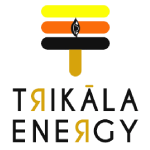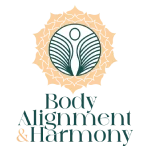Breathing


Breathing is one of our most natural functions. It bridges the macrocosm of nature and the microcosm of the human. Certain techniques of breathing move the internal energy of the body in ways that create vibrant health and well being.
The mind and breath are interconnected. A steady breath means a calm mind and a calm mind helps steady the breath.
"Pranayama" – a yogic breathing technique
The Sanskrit word Pranayama has two parts: prana and ayama. Prana means vital life force. Ayama means expansion. Pranayama means “expansion of life force”.
Pranayama purifies the Nadis, energy channels, of all impurities. Once one’s nadis are purified, the kundalini energy can freely flow through the Sushumna Nadi. It balances the chakras and calms the mind. It oxygenates the blood and effectively brings oxygen to the deep tissues and organs thereby effectively removing toxins that cause illness.
One of the many forms of pranayama – a simple yoga exercise that can be done almost anytime and at any place.
Procedure
1
Sit in lotus pose or a comfortable position where the back is as straight as possible
2
Keep your focus on your breath and making sure that your inhalations and exhalations are silent through the procedure
3
Rest your left hand on your left thigh, palm facing up, in Gyan mudra, index finger pad touching the thumb pad
4
Press gently on your right nostril with right thumb and inhale slowly through your left nostril
5
Once you have inhaled completely, press gently on the left nostril with right ring finger and exhale slowly through the right nostril
6
Keeping the ring finger pressed on the left side of your nose, inhale through the right nostril.
7
Block the right nostril with your right thumb and exhale through the left nostril.
8
This completes one round
9
You may begin with 5 rounds daily and as you advance in your practice, you can increase the duration of each cycle and the number of repetitions.
You will notice benefits over time as you maintain consistency. Practice this until you are ready to move on to the next level that involves breath retention. More specifics on pranayama technique are not discussed here and should be sought from a yoga teacher.
As pure oxygenated air is breathed into the lungs with each cycle, the blood gets purified and circulation improves.
Benefits when done on a regular basis
- Increases overall lung capacity.
- With more oxygen in blood circulation, the functioning of other organs in the body
improves. - As circulation improves, energy levels also increase.
- By increasing the rate of metabolism it can help weight loss.
- Calms the nervous system and mind and helps clear thinking
- Reduces anxiety and stress
- Regulates sleep patterns.
- Improves appetite.
- Improves memory and concentration
- Promotes spiritual awareness
- Reduces bad body odor.
- Strengthen the immune system and prevent illnesses.
- Help alleviate chronic headaches and asthma.
Precautions
There should be no forced or strained breathing during the exercise, as this can prove harmful to the body.
If during the exercise, you feel your body shaking involuntarily or your muscles have become tense, stop the exercise and breathe normally.
If you suffer from high blood pressure, you should avoid Alternate Nostril breathing.
Always listen to your body’s signals, change the pace or stop if you feel any stress during this exercise.
Lungs are one of the controlling energy channels of the ability to “let go.”


